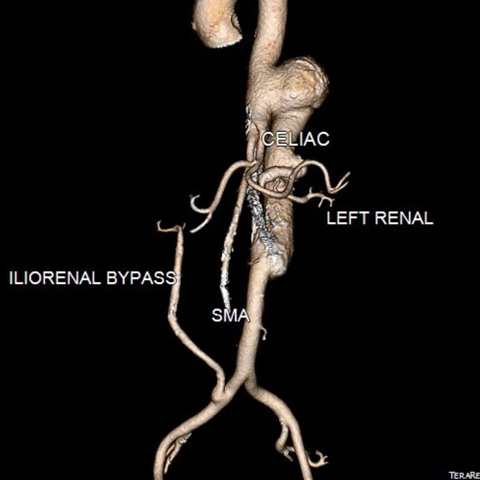Aorta
TAA
Atypical aortic pseudoaneurysm: How best to treat?
Analyze the video sequences of this 78-year-old woman with a 6.1 cm pseudoaneurysm from a descending thoracic aorta anterior to an infra-abdominal aortic bypass. Decide on the most appropriate treatment, then learn how the patient was actually treated.
Part I - Case presentation
- A 78-year-old woman was referred for a pseudoaneurysm developed on a prior aortic bypass between the descending thoracic aorta and the infra-abdominal aorta, measuring 6.1 cm in maximum diameter.
- 1998: at the age of 53, the patient was treated for aortic coarctation with both a descending to infrarenal aortic bypass and a bypass to bilateral renal arteries
- Complication: thrombosis of the right renal bypass requiring right common iliac artery to right renal artery bypass
- After several month of hospitalization, she recovered well.

Part II - Treatment
Custom-made two-component endograft
- branches for CT and SMA
- 1 large fenestration for left renal artery

Graft plan with two components integrating preloaded catheter

video
Get the latest clinical cases and breaking news delivered straight to your inbox!

